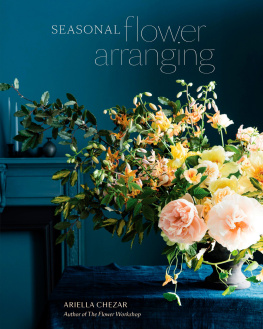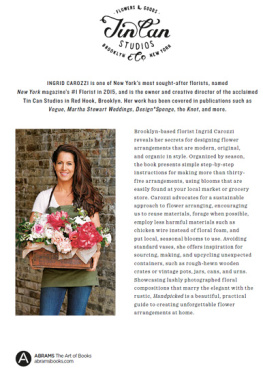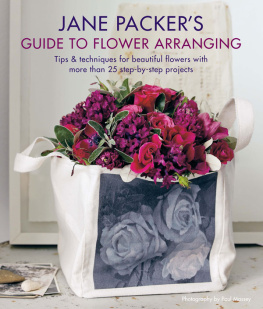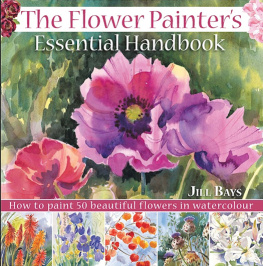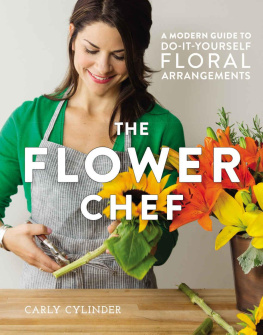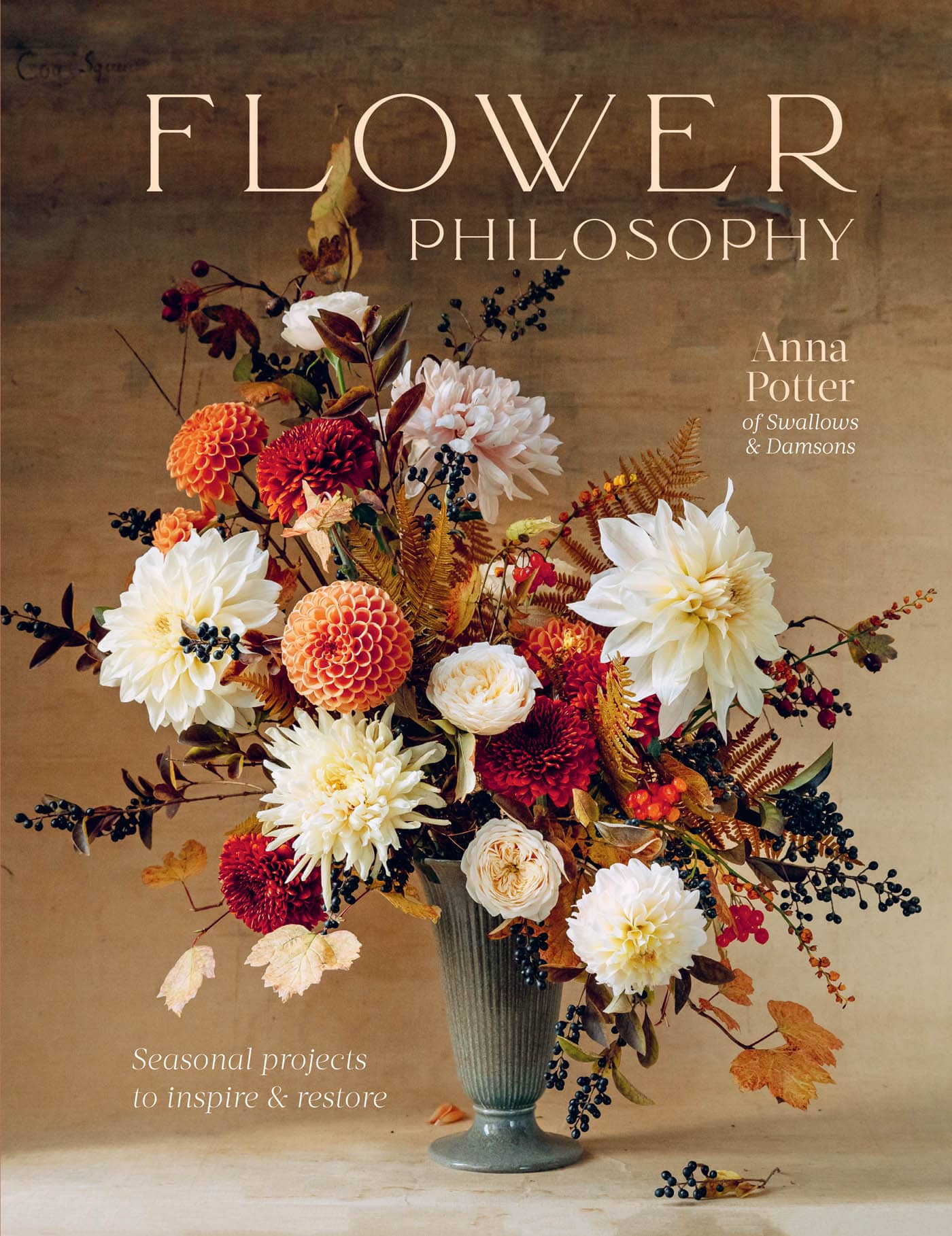Contents
Page List
Guide
Cover
FLOWER
PHILOSOPHY
Anna
Potter
of Swallows
& Damsons
Seasonal projects
to inspire & restore
INTRODUCTION
We are stardust
Billion year old carbon
We are golden
Caught in the devils bargain
And weve got to get ourselves
back to the garden.
Joni Mitchell
IT BLOOMED IN MY POCKET!
The sheer joy on my sons face when he reached into his jumper pocket and clutched in his grubby hand a solitary open flower. Soft and clumsy with tenderness and curiosity.
And surely that is all there is. As adults we encounter struggles, hurdles and barriers that, one by one, we must identify, challenge and overcome so that, as we watch them melt away, we can return to what lies within each one of us: all-encompassing joy, wonder and freedom. This is what nature so obviously and obnoxiously calls on us to do to pay attention, to let go and to listen to the deep longing we have to connect with the wild.
Flower Philosophy comes as a follow-on from my first book, The Flower Fix, in which I focused on the aesthetics of floral design and the choices made to suit an environment. With this book I have chosen to head in a new direction, to reveal my inner thoughts in relation to the projects I create. My wish is to focus on a return to the untamed and to show how working with flowers can also serve as meditation, ritual and art.
In writing this book, I have explored industrial city, suburban maze, country village and the wild moor. By briar, bramble, robin and heron, I have observed how nature thrives and entwines and connects. I have watched busy humans interact, speed up, slow down. And I have listened to people talk of their days without taking a breath. What I have learned is that many of us seem endlessly to strive for perfection, which we all know deep down is unachievable. Through my watching and listening, I have gained new insights into the world around me simply through observing. But really observing. Not just looking and seeing, but seeking out the magic in small things. Not shying away from the unknown, from the shadows. I have discovered a powerful place in which we are all one, and this has been my inspiration for writing this book.
I should point out that my books are not strictly instructional how to guides. You should feel free to use the ingredients lists and methods of arranging loosely. Following Constance Sprys model, the instructions simply make a good starting point from which you can develop your own creations, add your own stamp, create freely.

Journey Back to Nature
The freedom to create without unhelpful comparison is a hard turn to navigate right now. We are bound by the stories we are peddling, the things we pay attention to, the media, culture, our expectations, our perception of success, the pressures we lay on ourselves to post picture-perfect experiences on social media without ever actually having fully experienced it. We live as robots, plugged in, surrendering our inner spaciousness by running from one deadline, goal or crisis to the next. We latch on to things that fill up a schedule in order to tick our productivity quota. We are holding on so tightly to the transient and becoming ever more separate from the natural world and from one another. The mountains, woodlands, oceans and overgrown roadsides are calling us home. I see it in my dreams; I am being held by a giant mossy hand, or suspended in thick inky black water. Our tired, restless bodies are telling us that wildness is a necessity.
I write not as an expert, not to provide answers, but as a student, ever learning and documenting my findings in the hope that you, too, might find an opening or hear a calling that inspires you to ask your own questions. Journey back to nature, sit for a while, and soon she will dwell within you. Let her rot your name, decompose your history and make light of your daily chores. Let her put dirt under your nails, brambles in your hair and muddy your knees. Awaken your wild self, your innate poetry.
Seasonal Offerings
The arrangements in this book are arranged by season. An unavoidable clich, perhaps, but I do not think so. During the lockdown months of previous years, I found myself surrendering to the rhythms of the natural world, from which we are not separate but very much a part of. I began writing in a frosty January garden, three blankets, two jumpers and one hot-water bottle thick, with a fire and a chai close by. Being dripped on as the flames beside me thawed the ice overhead, it felt necessary to be right there in that moment, listening.
As we learn to better understand what each part of the year has to show us and practise living within her cycles, it becomes easier to recognize moments of transition within ourselves. We may be experiencing summer physically, but deep inside, perhaps there is a need to winter. Life through the pandemic made me observe the time passing more closely, acutely aware of the changes in the season, and in myself. But it also led me to become intrinsically familiar with the flow of each season, to pay more attention to what was growing at any one time. It made me more curious, invited me to explore and experiment and encouraged me to practise gratitude and reciprocity.
Sustainability
I should like to add a note about sustainable practice, and how important it is as an industry even as an individual who is simply experimenting with flowers to take small steps to minimize a harmful impact on the planet. Seasonal, locally grown flowers are always the best option. Research your sources and find out how your flowers are grown and harvested. If buying locally grown is not an option say, for seasonal reasons find out where your flowers are imported from. Are they dyed? What are the conditions like on the farm they have come from? Actively seeking this kind of information enables you to make a conscious decision on whether or not to buy flowers. Of course there are always dried flowers too, which have the added beauty of being reusable. Dry your own or buy dried from a supplier.


![Shinichi Nagatsuka [永塚慎] - Easy Ikebana: 30 Beautiful Flower Arrangements You Can Make in Three Simple Steps](/uploads/posts/book/306395/thumbs/shinichi-nagatsuka-easy-ikebana-30.jpg)
